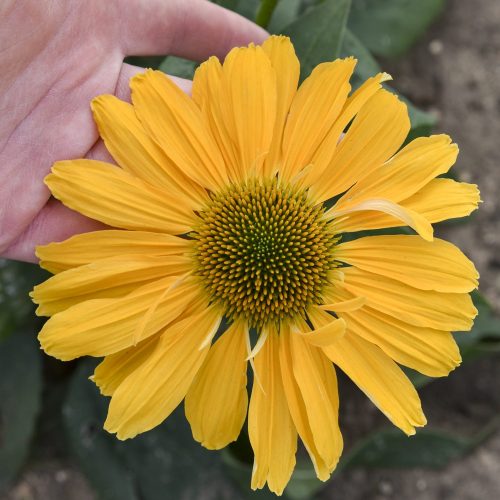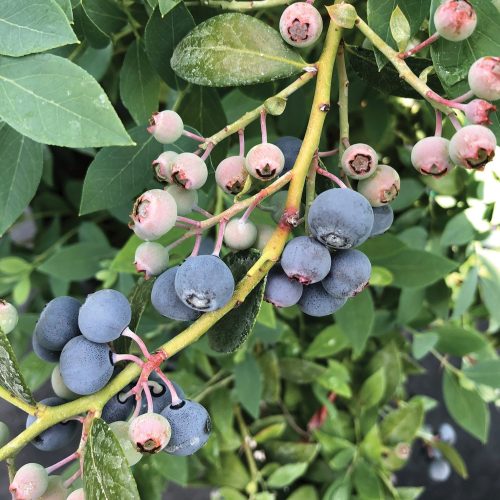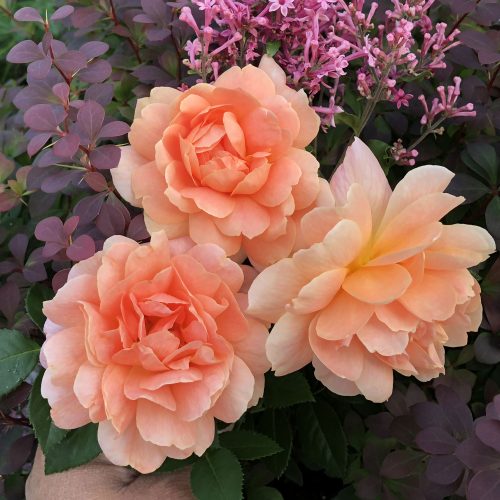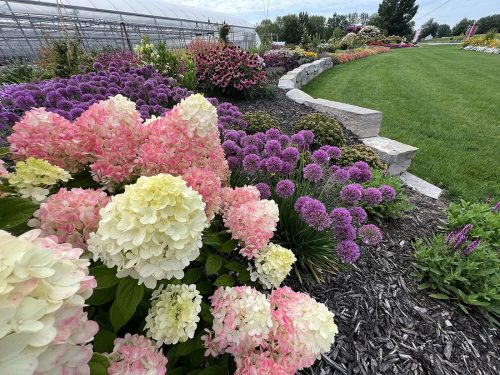
What is a sensory garden? Simply put, it is a garden that purposely engages any or all of the five senses: sight, touch, sound, taste and smell.
At one time, sensory gardens were created specifically for those with some sort of disability like blindness or lack of mobility. It was understood early on that people with learning disabilities or who were autistic benefitted greatly from sensory gardens. But as the effects of being outdoors and interacting with plants have been studied further, we’ve realized that this type of engaging, dynamic garden benefits everyone.
Engaging all senses ensures that everyone can feel the benefits, even if one of their senses is greatly reduced. The more senses that are involved, the richer and more memorable the experience will be. Stepping outdoors and engaging with the garden after a stressful day can calm your mind and your nervous system, reset your mood and boost your serotonin.
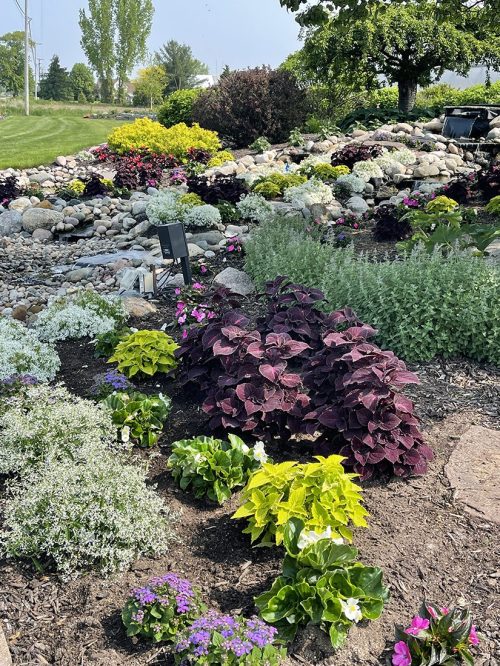
Any garden can become a sensory garden. You could plan a new one from scratch and deliberately design features that touch upon all five senses. Or, more simply, you could intentionally choose elements or plants for your landscape that nourish your sense of sight, touch, sound, taste or smell. Doing so will help you and anyone else who finds themselves in your garden experience and benefit from it on a deeper level.
Let’s take a closer look at the five senses and elements of the garden that contribute to each.
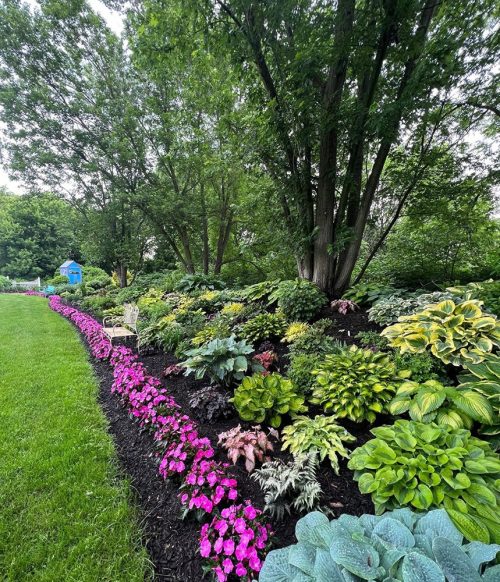
SIGHT
The most obvious sense we engage when growing a garden is sight. Of course, we work to create aesthetic beauty in our outdoor spaces. But beyond visual beauty, there are so many other ways we use our sight in the garden. We see the way that plants of varying textures, shapes and colors contrast and play off of one another. We notice how wispy plants like ornamental grasses sway in the wind. Birds catch our eye when they visit our feeders or birdbaths. A borrowed view into a neighboring property might offer the sight of a magnificent old oak tree.
TOUCH
When it comes to touch, there are things we intentionally reach out to feel and those things that touch us. We notice the smooth, silky texture of a rose’s petals rubbed between our fingers. The fuzzy leaves of foxglove feel very different than the rough bark of a favorite tree.Run your fingers over the spiky cone of an Echinacea and feel the rubbery texture of succulent sedum leaves.
Close your eyes and think of how a cool breeze or the hot sun feels on your skin when you’re outside. Notice the sensation of moist earth or wet grass under foot. Brush aside a plant that’s blocking your way as you walk by and feel its leathery textured leaves. These and many more seemingly inconsequential touches enhance our experience and enjoyment of being outdoors.
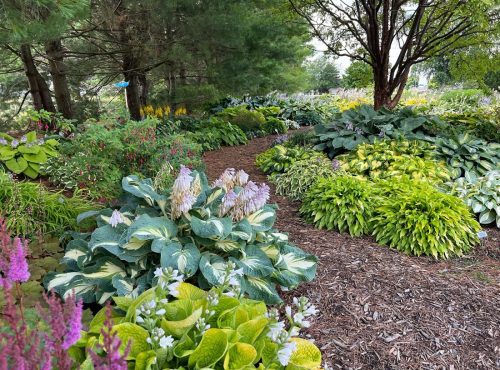
SOUND
Something as simple as what material you use for your pathways can completely change the way you experience sound in your garden. A wood mulch path is quiet underfoot, while crushed gravel or fallen leaves in autumn bear distinctive sounds you could recognize with your eyes closed. Shake the dried seeds of Baptisia and you’ll hear why Native Americans used them as baby rattles. Rub the leaves of pigsqueak between your fingers and you’ll see how it got its name.
In addition to choosing plants that create sound, we can add sound to our gardens in more ways. A bubbling rock or trickling stream contributes the sound of running water. Melodic windchimes and wind blowing through the trees are calming sounds that tell us how windy it is outside. Crickets, birds and animals contribute sounds to the garden, too.
TASTE
Stick out your tongue and feel the raindrops or snowflakes land softly on it. They have a distinctive taste, don’t they? Think about the sweet flavor of those first ripe blueberries of the season that you pluck right off the bush. All sorts of vegetables, fruits and herbs, and even plants with edible flowers contribute to the element of taste in our gardens.
SMELL
Pick a flower for a bouquet and what’s your first instinct? To smell it, of course! Plants with fragrant flowers, leaves, stems and bark all contribute to a sensory-rich gardening experience. Some of them are edible too, further engaging our sense of taste. Use cedar chips for your pathways, work or play spaces and its distinctive, fresh scent will play a role, too. Then, there is “petrichor” – the pleasant scent of wet earth after a rain. Some people can even “smell” when rain is on the horizon.
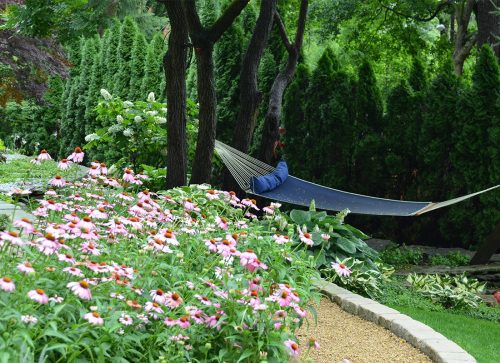
Oftentimes, we are too busy working in the garden to stop and notice how our senses are engaging with it. That’s alright – your subconscious is recording everything. Help yourself slow down and experience all that is happening by including meandering pathways through your yard. Curved paths take ever so slightly longer to traverse, and it’s worth taking those extra few seconds for your five senses to catch up with you.
Place a simple bench or hang a hammock in the shade where you can rest for a few minutes while you give your body a rest. While you’re at it, stop to take a mental inventory of the sights, feelings, sounds, tastes and smells right at that very moment. We promise, the sensory-rich experience of it all will bring you joy.

